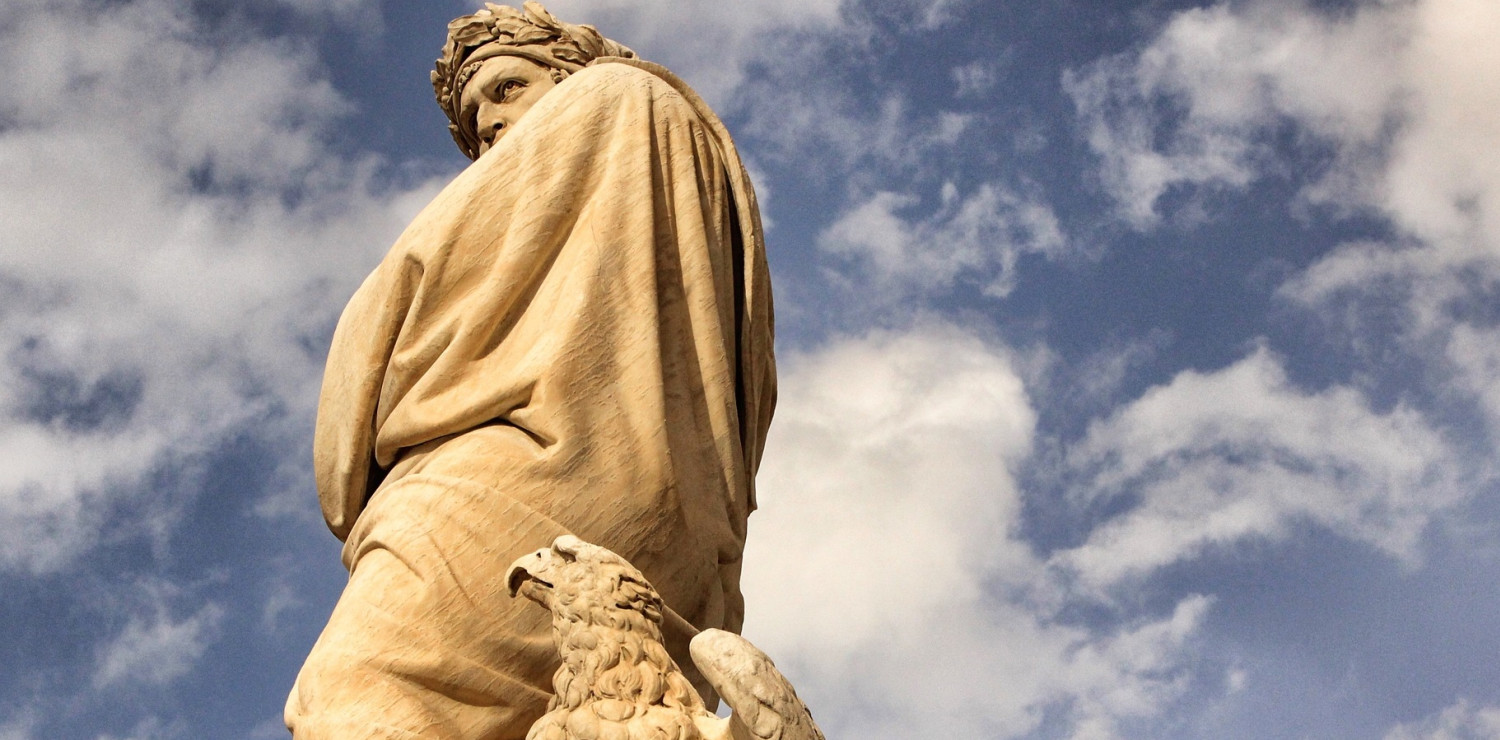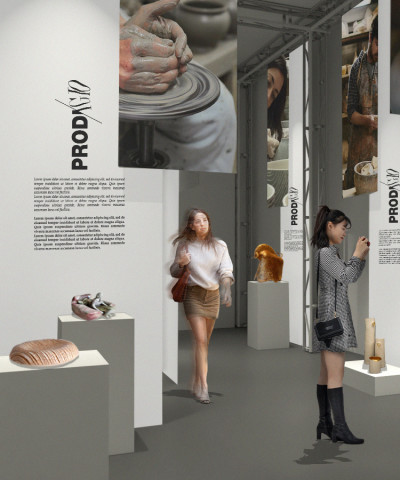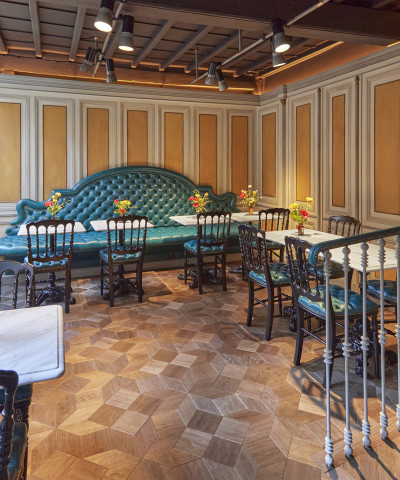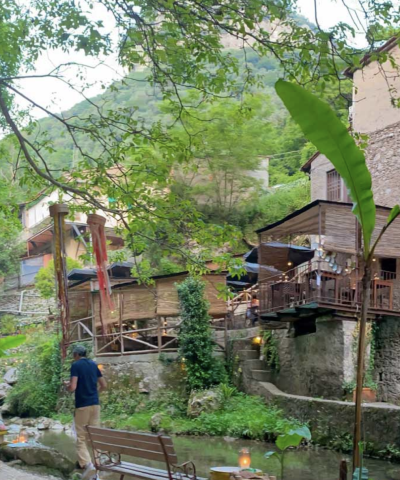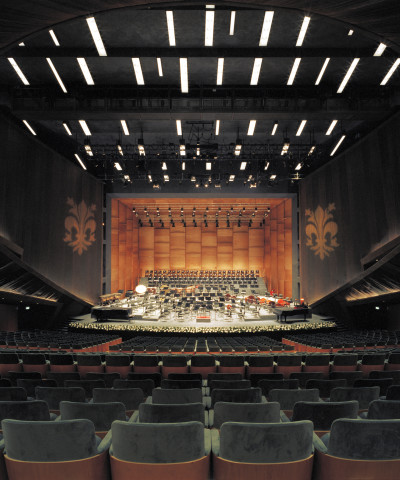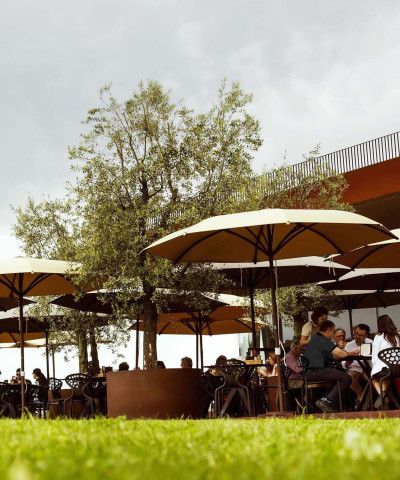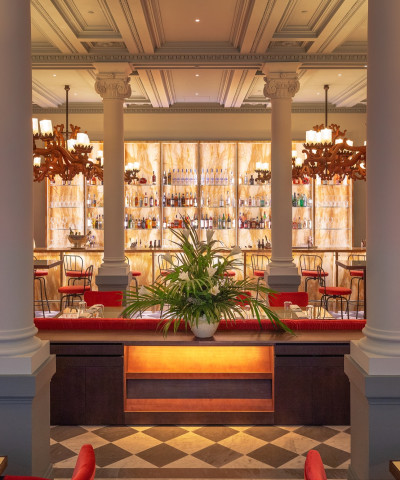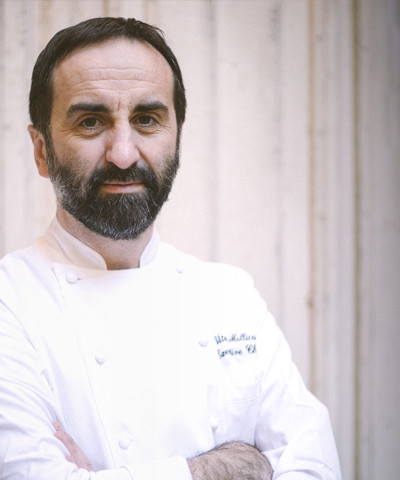Dante's places not to be missed in Florence
An itinerary not to be missed in the footsteps of the Supreme Poet
Our virtual tour starts from the Santa Maria Novella Station, from where we head towards Via Cerretani - dotted with towers, one next to the other. A few hundred meters on our right we stop at the Church of Santa Maria Maggiore: on the outside there is a plaque that recalls Dante's encounter with his master, and Florentine notable and man of letters, Brunetto Latini under a rain of fire (in Canto XV of the Inferno, among the sodomites). Inside the church, of interest to us is the inscription, identified in 1751, on a column of the left chapel that indicates the tomb of Brunetto Latini (to find out what Florence was like in Dante's time, click here).
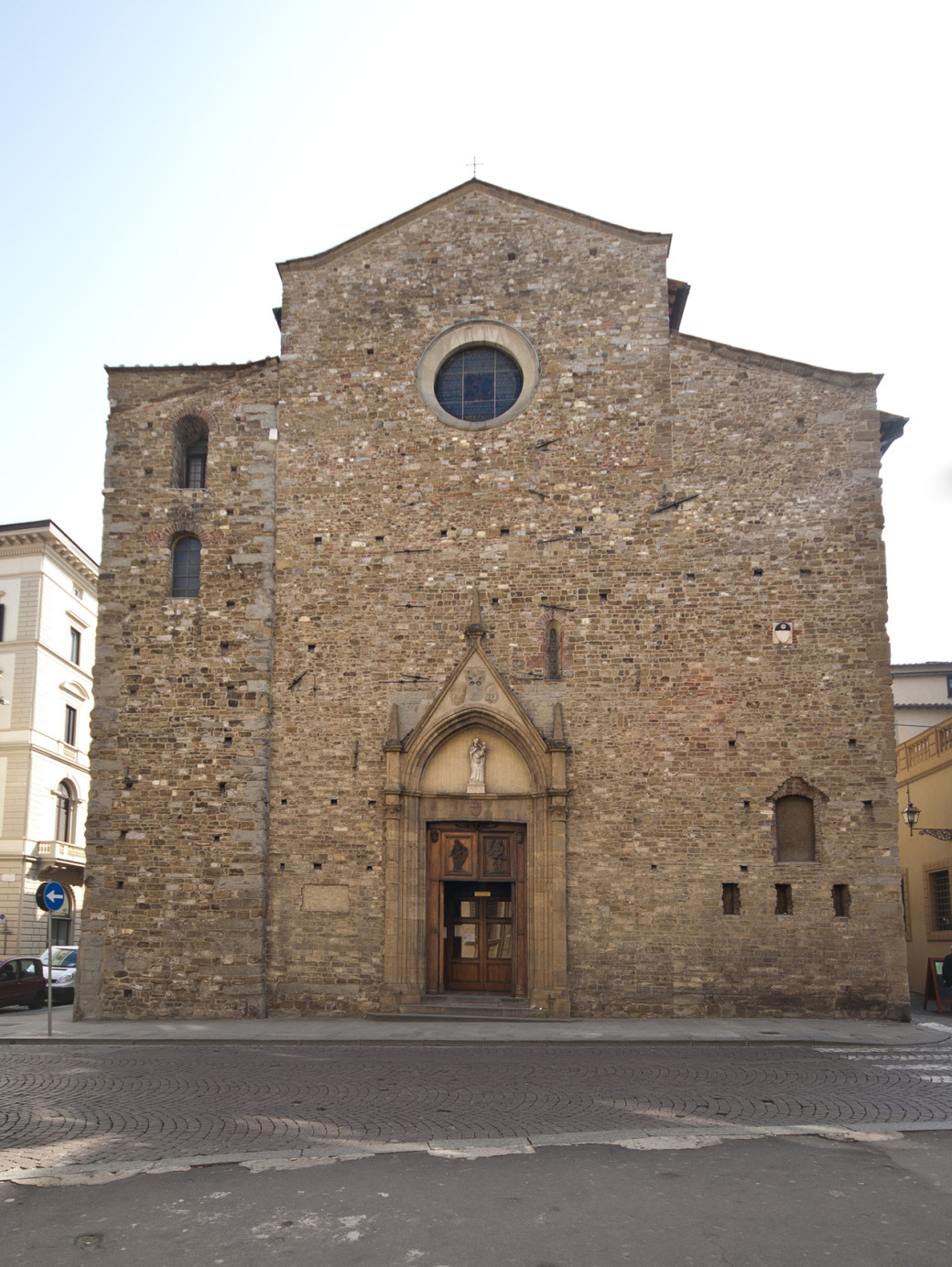 Chiesa Santa Maria Maggiore
Chiesa Santa Maria Maggiore Arrived in Piazza San Giovanni, we come across the Baptistery, called by Dante the "beautiful San Giovanni": on the ground two tombstones of Dante. One recalls the monument consecrated in 1059 where Dante himself was baptized, while the other, Dante's love and regret for Florence and his dream of returning from exile. Ancient testimonies prove that the Baptistery, like other Florentine buildings, had an aerial route that connected it to the rectory and the bishop's palace, for reasons of convenience but above all for security.
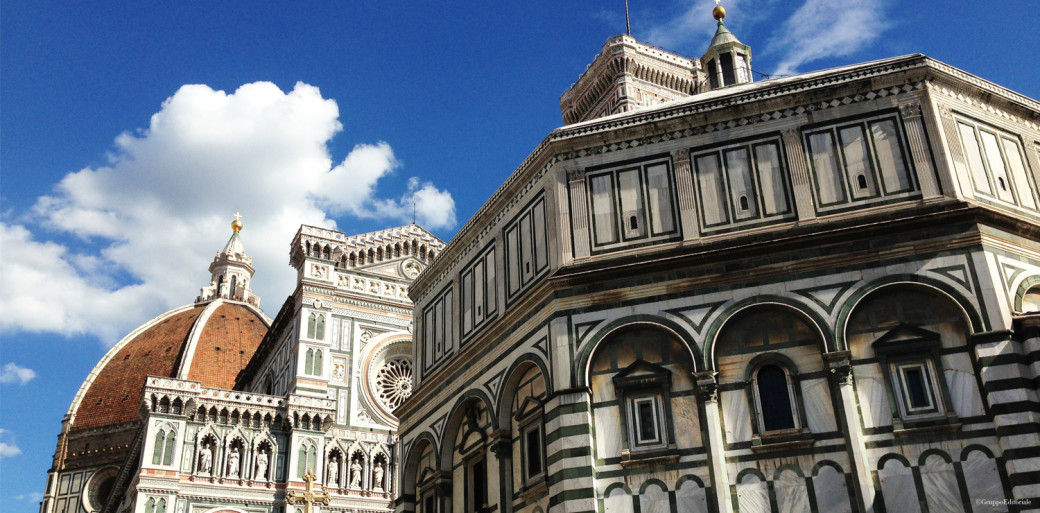 Battistero San Giovanni Firenze
Battistero San Giovanni Firenze Back on the square, we head towards Via de' Calzaiuoli, a very popular destination for the presence of stores and department stores but also rich in history. Meanwhile, the first part of the street, once called Corso degli Adimari, presents the two towers of the Adimari, (at number 13 and number 91R), one of the most powerful Florentine families of the Guelph party, present in Florence since the eleventh century. The Tower of the "Guardamorto" belonged to them and it overlooked the present square of San Giovanni. It was so called because its view overlooked the ancient cemetery that once existed in the square and that was destroyed in 1248 by the Ghibellines and in its place was built in 1352-58 the Loggia del Bigallo. On the left of via Calzaiuoli, on the corner with via delle Oche, a plaque recalls the Loggia degli Adimari, called "La neghittosa". And always in Via delle Oche, at number 15, there is a plaque in which Dante reproached the Adimari family for their cowardice. Dante in fact never showed any particular sympathy towards this family, considering that one of its members was Filippo Argenti, mentioned in the tombstone in via del Corso 18, and depicted as rich, powerful, irascible and not very virtuous, whose name derived from the proud and ostentatious habit of shoeing horses with that material.
At number 11r of via De' Calzaiuoli, between Orsammichele and Piazza della Signoria, there is a beautiful palace that once belonged to the Cavalcanti family, as can be seen from the coat of arms set on one of the corners of the building. A plaque reminds us of Dante's friend and fellow student Guido Cavalcanti.
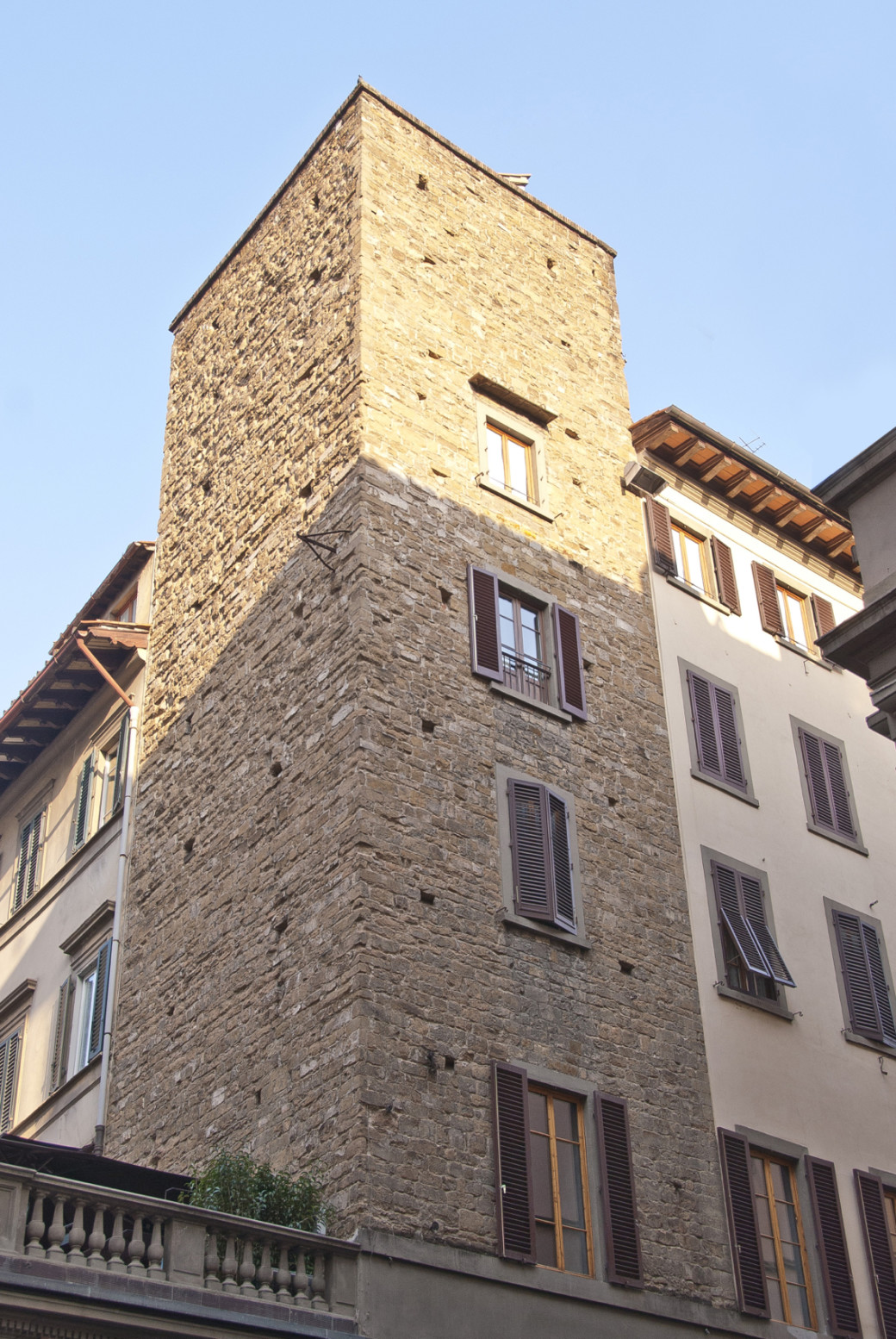 Torri degli Adimari
Torri degli Adimari We are now in Piazza della Signoria, with its singular shape, where, in addition to the famous Palazzo Vecchio, we find the 14th century Palazzo del Tribunale della Merca(ta)nzia, towards Via dei Gondi, where once the commercial questions and controversies of all the Florentine guilds were settled. On its facade you can still see the sandstone coats of arms of the Municipality of Florence and of the major and minor Arts.
We enter in via dei Cerchi where at the corner with via de' Cimatori rises the Torre dei Galigai. Always in this street at the corner with Canto alla Quarconia rises the Tower of Cerchi. The Guelph family of the Cerchi, urbanized in 1200 soon became rich with the commerce and one of their components, Vieri, brought the family in ruin fighting as commander of the feditori first to Campaldino in 1289 (in whose ranks was also the young Dante) and then in the civil war against Corso Donati. Along this street on our left a particular engraving in the wall shows us the unit of measurement that was used at that time: the Florentine arm equivalent to about 58.30 cm.
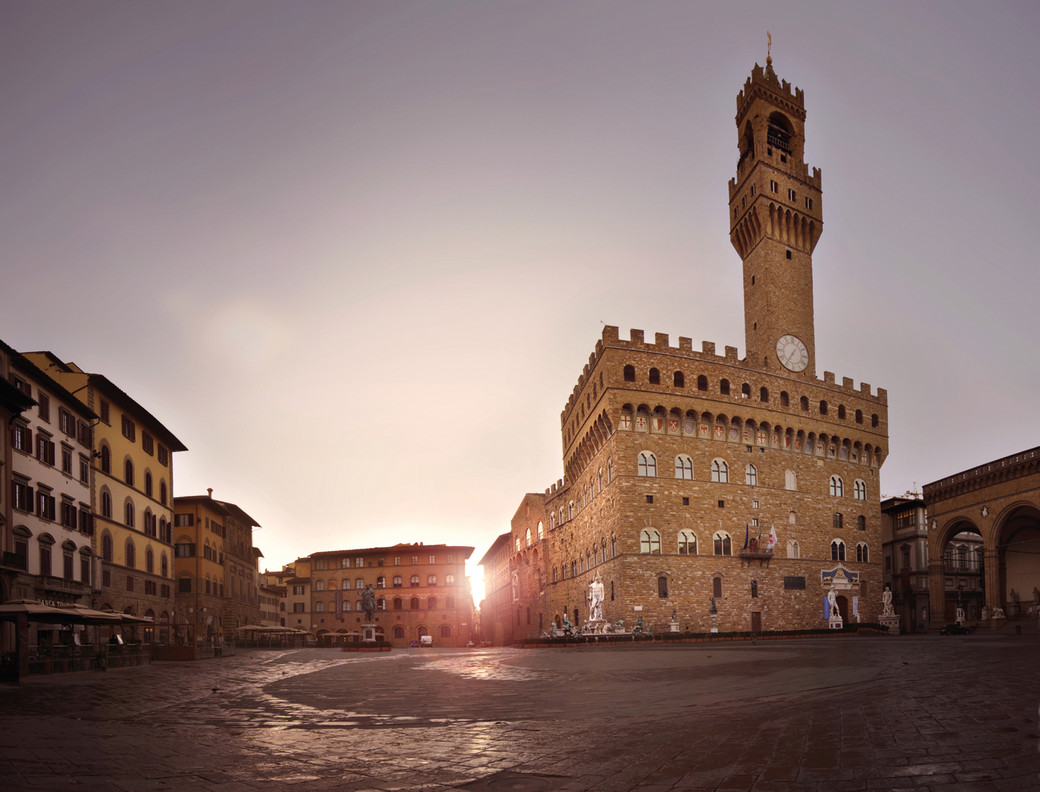 Palazzo Vecchio
Palazzo VecchioBetween Via de' Tavolini and Via dei Cerchi a coat of arms and a memorial stone recall the Galigai family, created knights perhaps by Charlemagne, but in principle of humble origin: the name of the family indicates in fact the tanners of leather. Always on this crossroad, on one of the family towers called "Boccadiforno" another tombstone from Dante (Paradiso, XVI) reminds us of the Della Bella family.
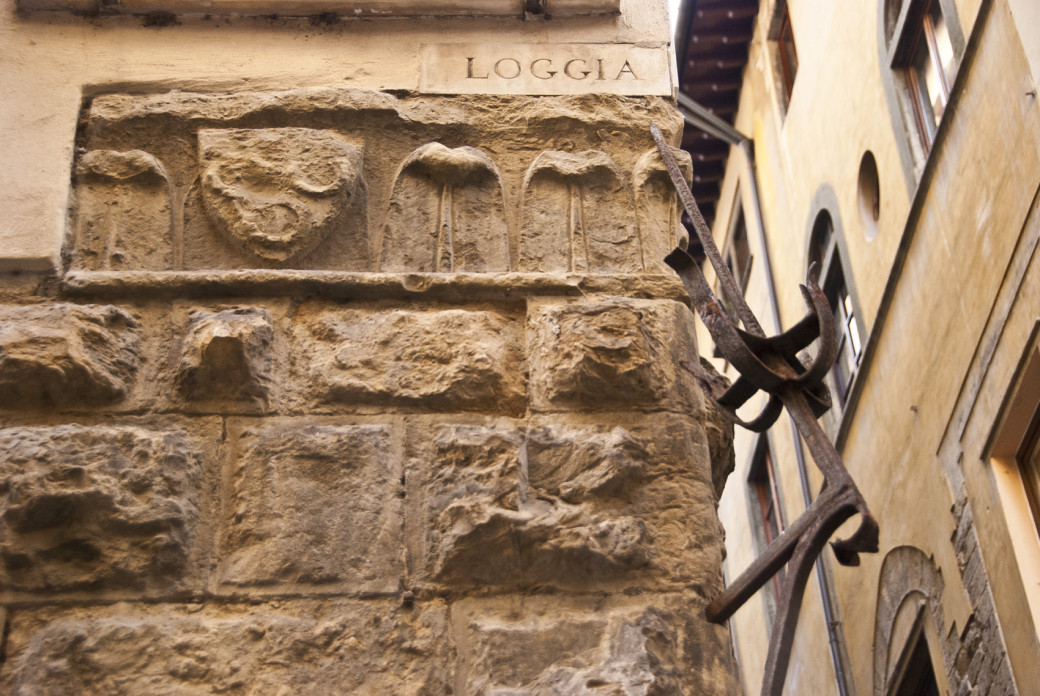 Via dei cerchi
Via dei cerchi From Via Dei Cerchi we have arrived on the Corso, also situated in the district of San Piero, close to the homonymous door. In the second half of the thirteenth century, this street was one of the most lively centers of the city and is dotted with Dante's tombstones and towers.
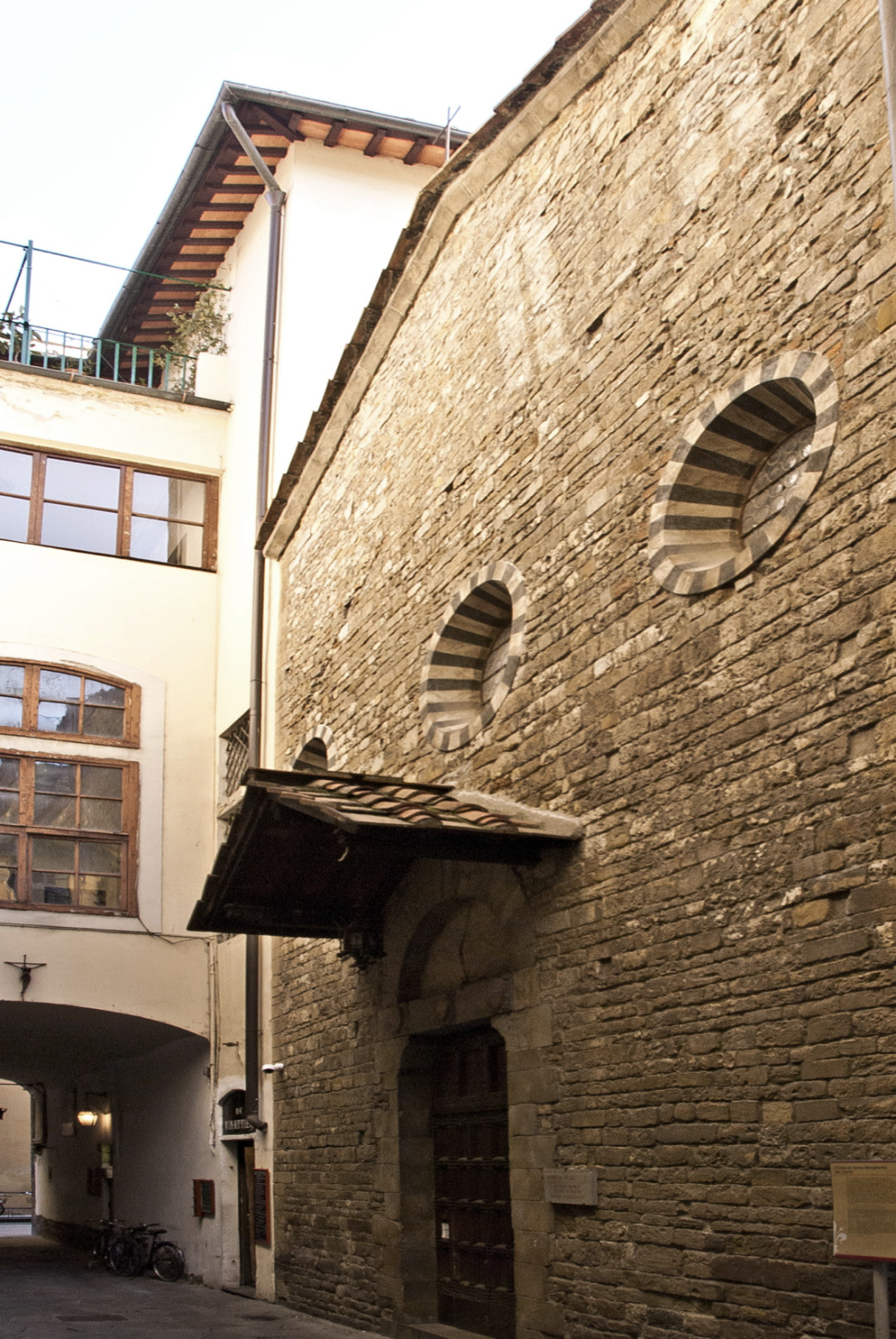 Santa Margherita dei Cerchi
Santa Margherita dei Cerchi In this street lived important families such as the Donati and the Portinari, from whom was born the Beatrice loved by our poet. As mentioned, here they had their properties, near the corner with via del Proconsolo, even the bitter enemies of the Donati, the Cerchi. At 48r there is the tower of the Ghiberti, and at 46 one of the six towers (dating back to the XII-XIII century) that the Donatis owned along this street.
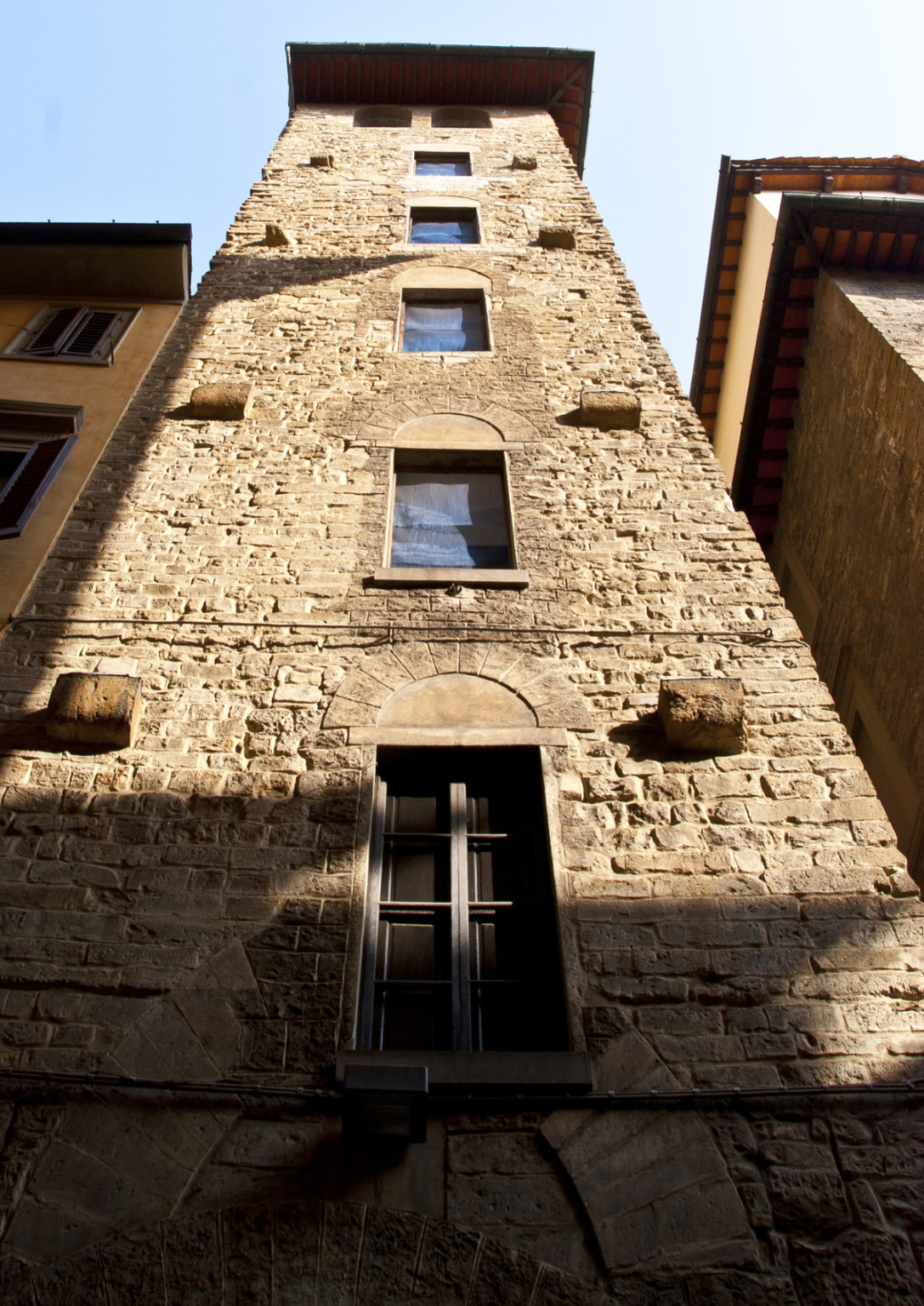 Torre Donati
Torre Donati If we go on for a few steps in via di Santa Elisabetta, on our left there is a small square where the circular tower of the Pagliazza stands out. The tower, indicated as the most ancient building in Florence and that has preserved its original aspect, leans on a circular wall that probably surrounded a tub or a room of a thermal structure of the Roman Florentia. In 1268 it was used as a prison and in 1285 it was specified as a female destination. The name derives precisely from this detail: inside the cells women did not sleep on the floor as male prisoners, but on a kind of straw mattress.
Let's go back to the Corso at 31-33r where we find the other tower of the Donati family, with its exposed stones and the pontaie holes and on which there is also a plaque that remembers the end of Corso Donati, first chased out of Florence by a popular uprising, then caught and killed and then dragged through the streets of the city. Nearby there are other towers of this powerful family (Borgo degli Albizi, at number 11, above Palazzo Tassinari and in Via Palmieri 35,). However, there are also the towers of the Cerchi, the rival family, as testified by the plaque on Via del Corso at number 4r, at the corner with Via del Proconsolo (Paradiso, XVI).
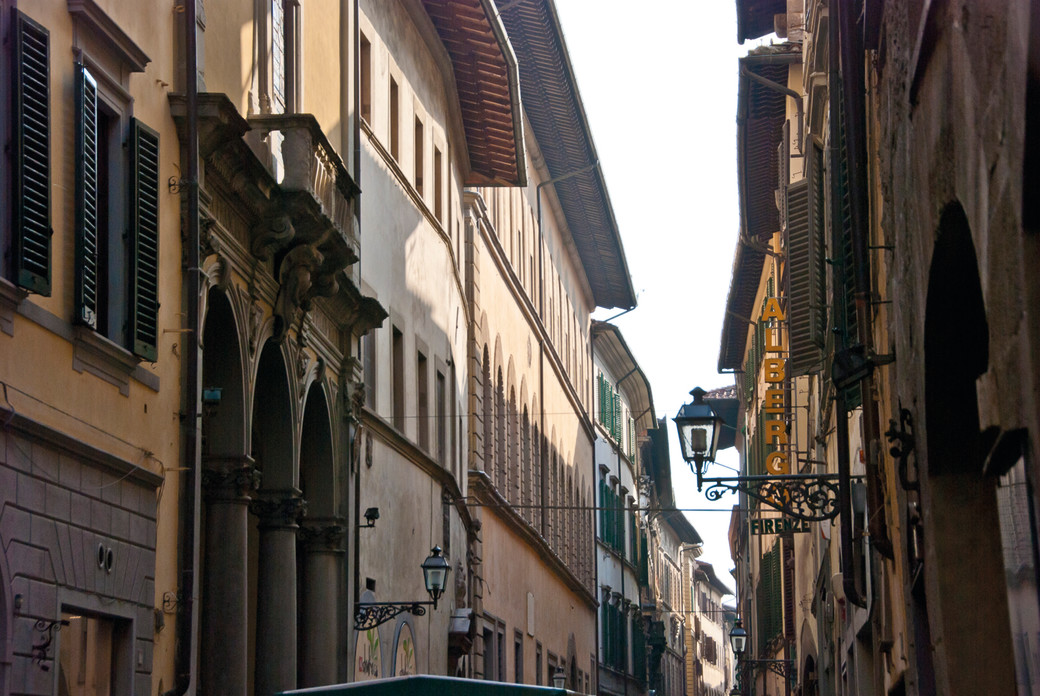 Via del Corso
Via del CorsoAlso on Via del Corso, at number 6, above the palace of the Portinari, next to Via dello Studio, the plaque remembers Beatrice. The Portinari family was from Fiesole and had important members such as Folco di Ricovero, a Ghibelline, exiled and persecuted, who in 1285 founded the Hospital of San Matteo which later became Santa Maria Nuova, and above all the father of Beatrice who lived in this house.
Almost in front of this plaque, another plaque remembers Bellincione di Berto (Paradiso, XV) example of ancient knight who lived in Florence with simple and essential costumes. Bellincione di Berto belonged to the Ravignani family, one of the oldest in the city, and was the architect of the peace negotiations between Florence and Siena in 1176.
From Via del Corso, we turn right into Via Santa Margherita, where at number 1 stands the Museum Casa di Dante, which is well worth a visit: this is the building that rises where, meter more meter less, there was the house of the Alighieri and that was rebuilt at the beginning of the last century, where at the end of the 19th century the restoration works of the buildings at the corner with via Dante Aligheri brought to light the remains of a tower that was called precisely degli Alighieri, but that probably belonged to the Giuochi family, but then kept the name of Alighieri when it was annexed to Dante's house.
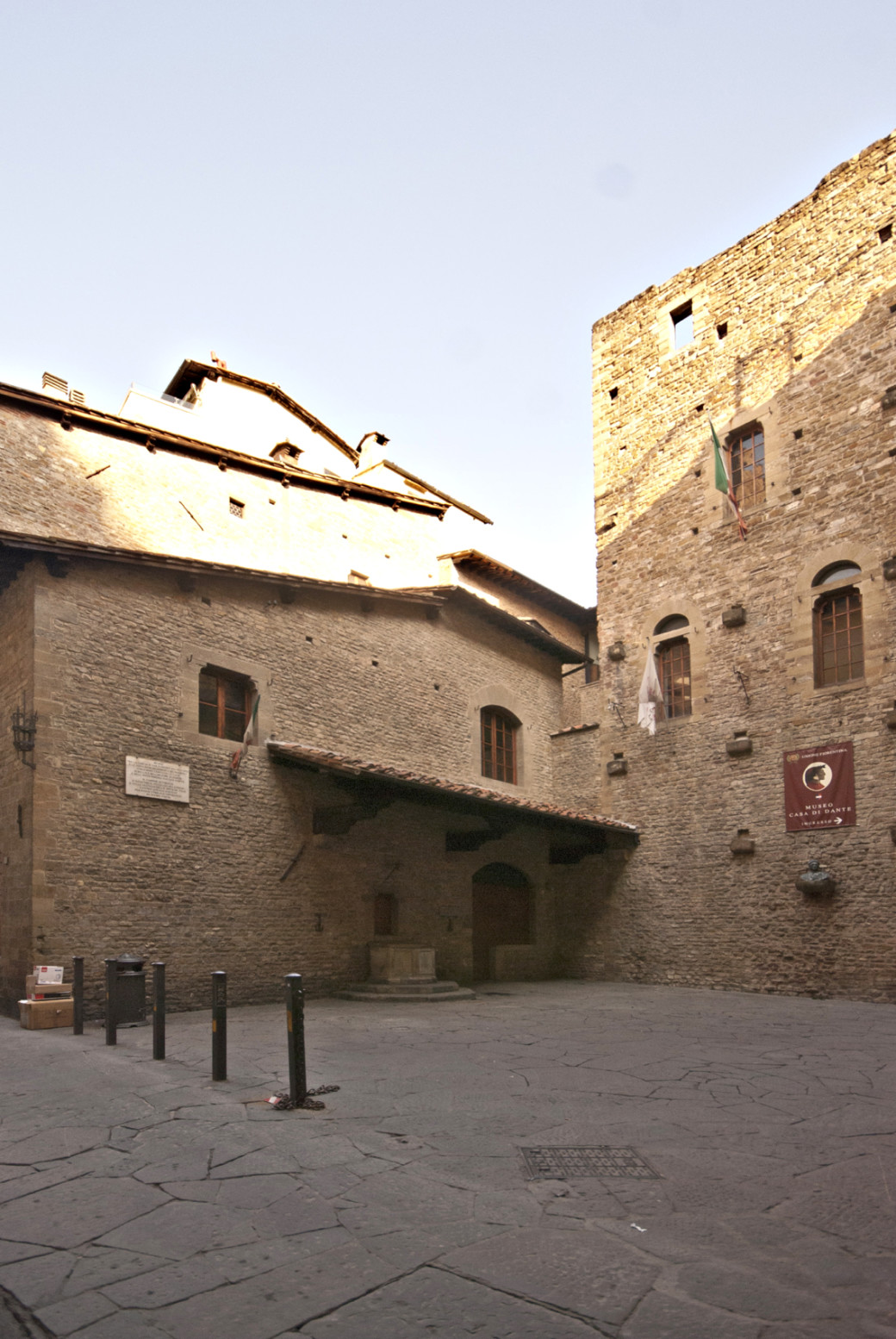 Casa di Dante
Casa di Dante After a visit to the museum we continue to Via Dante Alighieri, after having observed Piazza San Martino: here stands in fact the Torre della Castagna; with its beautiful appearance, it seems it already existed in 1038 because it was donated on that date by Emperor Conrad II, to the monks of the adjacent Badia Fiorentina, to defend the monastery itself. This tower became the most famous of the city in 1282, when the monks gave it to the Priors of the Republic who met there before the construction of the palace of the Lords (the Bargello). The name derives from the chestnuts that they used to put in particular bags during the voting. It is a curious coincidence that in Florence chestnuts were used for voting. The term ballot (in Florentine, chestnuts are called ballotte) seems to have originated from here. The tower, thanks to its origin "above the parties" was spared from the scapitozzatura in the second half of the thirteenth century. In front of the tower, above number 2 of Via Dante Alighieri, there is the tombstone where tradition has it that the poet was born and lived.
On our left, where Via de' Magazzini ends, we see a small church: it is the church of San Martino al Vescovo, probably founded in the tenth century, patronized by the important families of the area such as the Donati and Alighieri, is traditionally the place indicated for the marriage of Gemma Donati with Dante Alighieri and where in the Xv hosted the Company of Buonomini di San Martino that had the purpose of helping "the poor verghognosi", or the wealthy families who had fallen into disgrace because of political struggles, economic reversals and so on, who, for modesty, did not ask for alms publicly.
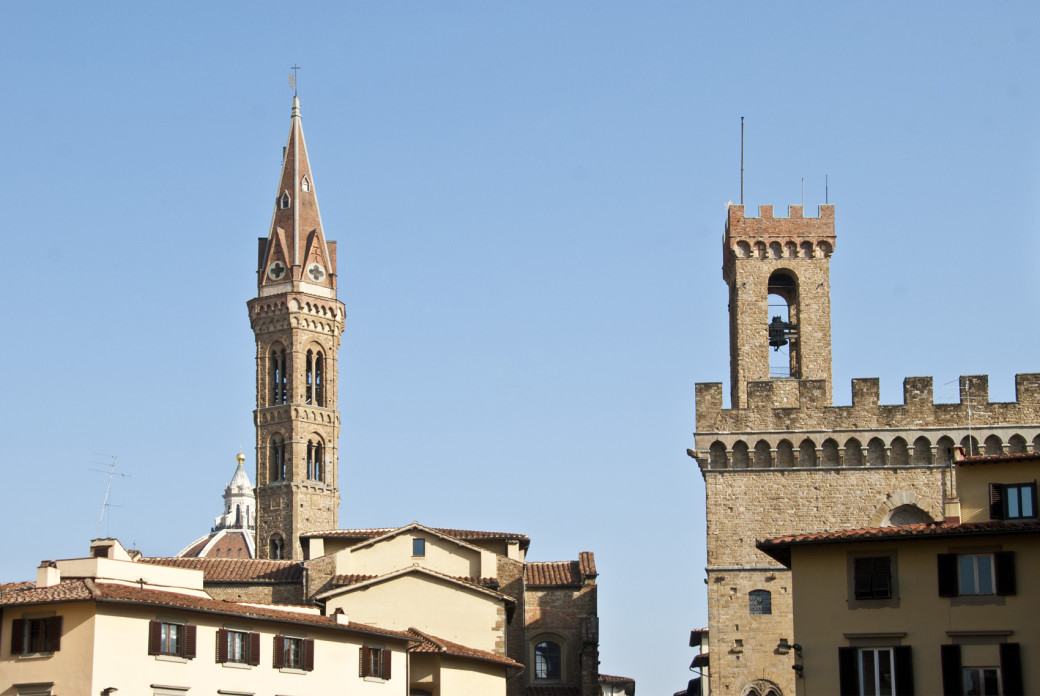 Bargello e Badia Fiorentina
Bargello e Badia Fiorentina Walking along via Dante Alighieri towards via del Proconsolo at number 1, Dante's plaque recalls the bells of the Church of the Badia situated a few hundred meters ahead. Dante loved and described many times the Badia which was already old and flourishing in his times and had a different orientation from the present one, with the apse which was in the place of the present façade. This church was one of the most important in Florence, founded at the end of the 10th century by Willa, mother of the Marquis Ugo of Tuscany and one of the creators of the pre-eminence of Florence in Tuscany. At that time the Abbey was the center of public life and it already appears in very old manuscripts kept in the State Archive, but our Poet never saw the present bell tower, which was built in 1330 on the ruins of the original one demolished after the rebellion of the monks against taxes.
A few steps away from us, on via del Proconsolo, at number 17r, the tombstone with the verses of the XVI canto of Paradise remembers Ugo di Toscana, who, like the above-mentioned mother Willa, was a very important personage for our town and whose remains rest in the church of Badia.
Our itinerary ends in Santa Croce. In front of the church, on the left there is the Monument to Dante Alighieri (opening photo) in marble, erected on the occasion of the triumphal celebrations for Dante's five hundredth anniversary in 1865. Inside the church, in the hope that the relics would be returned to the city, a large sepulchral monument was erected in 1829, in Neoclassical style, depicting the poet seated and pensive, while Poetry weeps, bent over the sarcophagus.






